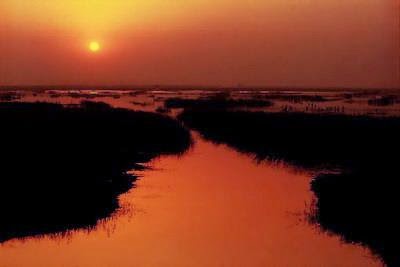Met a lot of people in China, and when I asked them, where they have
been in China, most of the answers are those five cities : "Beijing,
Shanghai
Shanghai travel, Guangzhou, Shenzhen, Hongkong"
Well, I've only lived in China for less than two years now and as an
ordinary students from an average family, my income is limited to only
scholarships and part-time jobs, but I could proudly say that I've
traveled to at least 12 provinces in China and about 20 different
cities. Some of them are because I participated in activities and
programs, some of them are because some relatives or friends invited me
to go with them, but most of them...I went there on my own, with one or
two traveling companions.
There are a lot of wonderful places in China and it's a pity if you
don't at least see some of them. Next time you have a chance to be in
China, don't waste your money shopping in "Beijing, Shanghai, Guangzhou,
Shenzhen, Hongkong". Instead, take out your map, buy train tickets, and
go visit these places :
6. Xi'an
My Chinese teacher said that "If you have never been to Xi'an, you haven't seen the real China"
And I agree with him. If you go and visit big cities in China
China tour deals,
you will only see tall buildings, traffic jams, some crowded
overly-commercialised fake "ancient towns", and also dark skies due to
heavy pollutions. That's not the case with Xi'an. Compared to today's
Beijing, Xi'an is much much smaller. As a capital for around 13
dynasties in the past, Xi'an still retain most of its ancient glory.
There are a lot of historical sites around the city, ancient buildings,
wonderful museums, tombs, pagodas, Terracotta Army, delicious cuisine,
and most of all, The City Walls.
Do : Ride a bike atop the city walls
The taxi drivers in Xi'an is a jerk. Aside from refusing to use meter
rates and giving you unreasonable prices, they could even drop you off
in the street if they found another passenger with a more "beneficial"
route. Try to use public bus more as Xi'an is quite a small city.
5 Xining
Chinese people call Xining "The Summer Capital". Most of hotels in
this city doesn't have air conditioner. Why? Because they don't need it.
Even in summer, the weather is cool, winds blowing all the time, and at
night, you will need to wear blankets. There is not much to see in the
city except for some mosques and islamic buildings. But if you get out
from the city, you will experience the "Tibetan flavors" as Xining is
the gateway to Tibetan plateau.
4. Datong
Datong is a small city located in mountainous Shanxi province. The
people in this city have a very little experience with foreigners. When I
visit Datong in Spring 2013, the city was under a heavy construction.
Many streets are being torn up while buildings are being torn down;
rubble and debris is littered all over the city. Other than the city
walls, there is not much to see in the city itself. The main attractions
in Datong, is not inside the city, but outside of it. The Hanging
Temple is pretty impressive architecture wonder, and Yungang Grottoes is
the second biggest grottoes in China, even bigger and better than
Longmen Grottoes in Luoyang.
3. Guilin
Guilin
Guilin tour
is a beautiful city that is often portrayed in ancient Chinese
paintings and poems. Surrounded by two rivers and four lakes and studded
with sheer sided karst mountains, Guilin is a home to 12 ethnic
minorities. Mountains, rivers, cities, and people, one in harmony. That
is Guilin. There are many scenic places within short traveling distance
in Guilin.
2. Harbin
Known as the "Winter Paradise", Harbin is one of the coldest place in
China. Located on the bordering province with Russia, Harbin is heavily
influenced by it, especially in architecture styles and foods. The
weather is cool in summer, and in winter, the city hosted the annual
"International Harbin Snow and Ice Festival"
1. Dunhuang
ocated on the crossroads of the ancient Silk Road, Dunhuang is one of
the most important city in ancient China. Today it is a small beautiful
town in the Gobi Desert with population less than 200.000 people. With a
rich history of over a thousand years old, Dunhuang is a great place to
visit for those who wishes to experience a life in the
desert.%%@af$ko&we*407





















